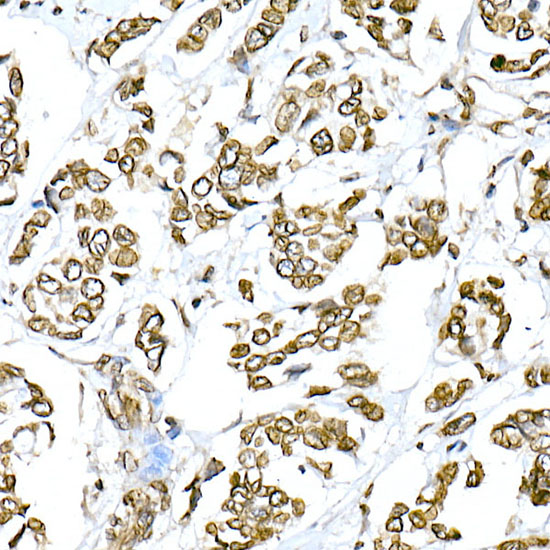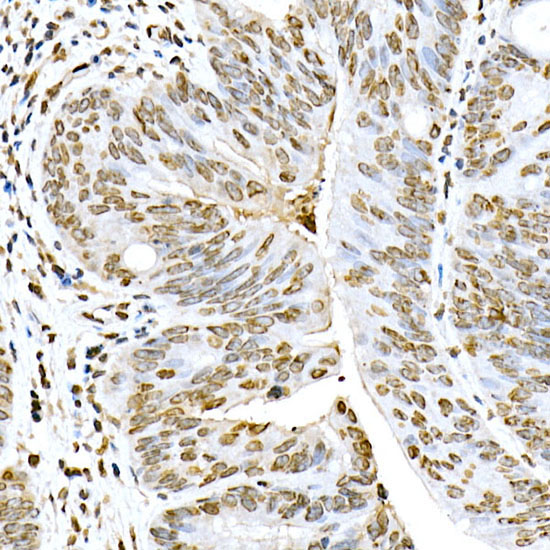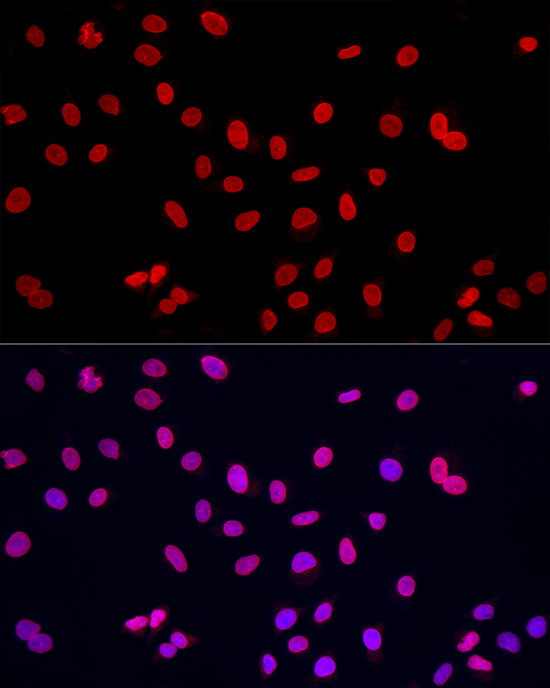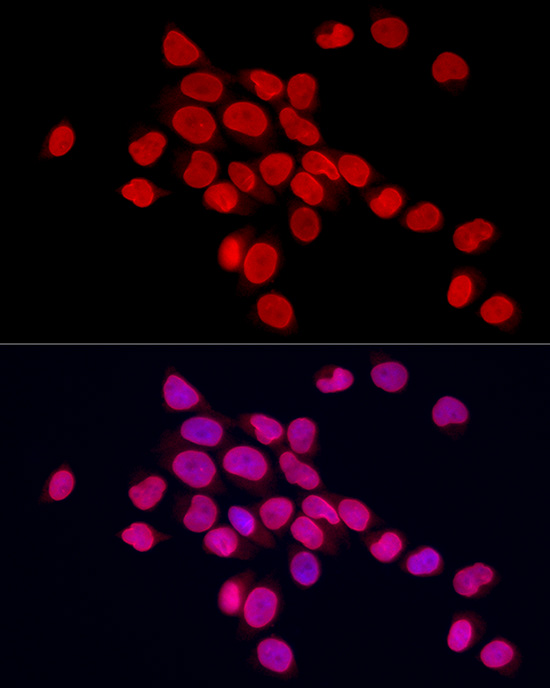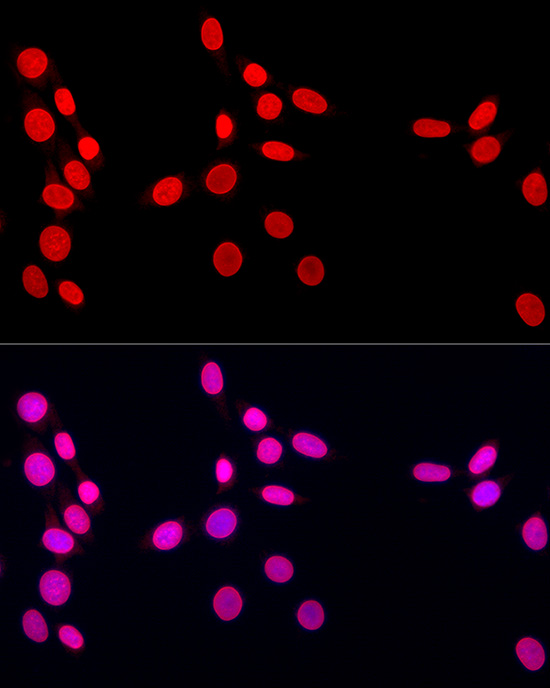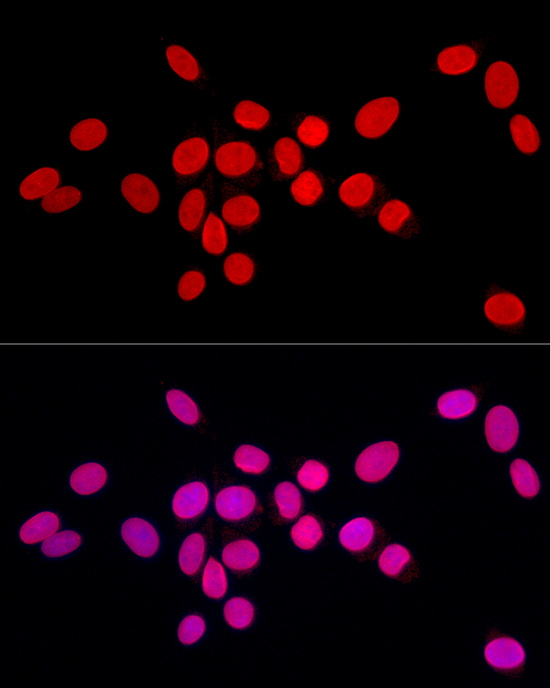Lamin A/C Polyclonal Antibody
For reference only. Please follow the manual included in your kit for instructions.
Catalog Number
RD90060A
Product Name
Lamin A/C Polyclonal Antibody
Catalog Number
RD90060A
Clonality
Polyclonal
Purification Method
Affinity purification
Isotype
IgG
Host
Rabbit
Background
The nuclear lamina consists of a two-dimensional matrix of proteins located next to the inner nuclear membrane. The lamin family of proteins make up the matrix and are highly conserved in evolution. During mitosis, the lamina matrix is reversibly disassembled as the lamin proteins are phosphorylated. Lamin proteins are thought to be involved in nuclear stability, chromatin structure and gene expression. Vertebrate lamins consist of two types, A and B. Alternative splicing results in multiple transcript variants. Mutations in this gene lead to several diseases: Emery-Dreifuss muscular dystrophy, familial partial lipodystrophy, limb girdle muscular dystrophy, dilated cardiomyopathy, Charcot-Marie-Tooth disease, and Hutchinson-Gilford progeria syndrome.
Immunogen Information
Immunogen
Recombinant fusion protein of human Lamin A/C
Gene ID
4000
Swissprot
P02545
Synonyms
LMNACDCD1CDDCCMD1ACMT2B1EMD2FPLFPLDFPLD2HGPSIDCLDP1LFPLGMD1BLMN1LMNCLMNL1MADAPRO1laminLamin A/C
Calculated MW
38kDa
Observed MW
34kDa
Applications
Reactivity
Human,Mouse,Rat
Tested Applications
WB,IHC,IF
Conjugation
Unconjugated
Dilution
WB 1:500-1:1000,IHC 1:50-1:100,IF 1:50-1:200
Concentration
1mg/mL
Storage Buffer
PBS with 0.02% sodium azide,50% glycerol,pH7.3.
Storage Instructions
Store at -20°C Valid for 12 months. Avoid freeze / thaw cycles.

